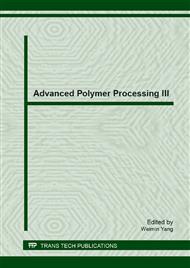p.384
p.390
p.395
p.400
p.407
p.411
p.417
p.422
p.428
Precision Parts Cleaning Equipment Using Supercritical Carbon Dioxide and Ultrasonic
Abstract:
Conventional cleaning technology and equipments could hardly satisfy effective cleaning of slit micropores from the precision parts, but using supercritical carbon dioxide(SCCO2) and ultrasonic cleaning technology with would solve this problem. SCCO2 have characteristics of low surface tension, fast moving, high dissolubility, strong diffusivity, no chemical additives and recyclable use. The precision parts would widely use this cleaning technology. In the article the precision parts cleaning equipment using SCCO2 and ultrasonic is proposed, and the equipment could use supercritical cleanout and ultrasonic oscillation together, and could rotate the parts, increase the quantity of the parts, improve the cleaning effect, it is an absolutely necessary to guarantee the cleaning effect of precision parts.
Info:
Periodical:
Pages:
407-410
Citation:
Online since:
July 2013
Authors:
Price:
Сopyright:
© 2013 Trans Tech Publications Ltd. All Rights Reserved
Share:
Citation:


